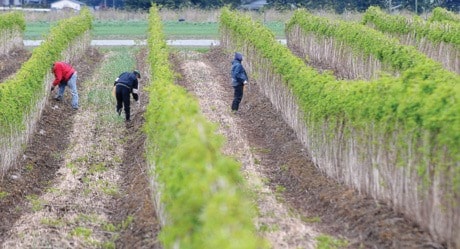Neil CORBETT and Kevin MILLS
Abbotsford News
Unemployment rose to 10.5 per cent in the Abbotsford area through February, making the Abbotosford-Mission census metropolitan area (CMA) the second highest of 33 across the country that were part of Statistic’s Canada’s latest labour force survey. Only Windsor, Ont. was higher, with unemployment of 10.7 per cent.
The national average was 7.4 per cent.
The good news, according to Lahouaria Ysaad of Stats Can, is that jobs were not lost in the Abbotsford-Mission CMA, but the number of people looking for work has increased, probably as a result of more people coming to the city.
There are now 10,300 people looking for work in Abbotsford-Mission. She said the rankings are volatile, and seasonal work in the agriculture industry this spring could dramatically change the ranking.
Ysaad noted that some of the industries experiencing declines in employment positions were transportation/warehousing, and financial services. Increases have come in accommodation and food services, and in goods producing.
Allan Asaph, executive director of the Abbotsford Chamber of Commerce, pointed to the HST and slowed house sales as another factor in the higher unemployment rate for February.
“A lot of our growth here has come from the construction trades and it’s been slow because of the delay in the transition back to the PST. People have been holding off buying.”
Asaph said he expects to see renewed interest in the housing market once the HST is finally eliminated.
He also said people are starting to look for seasonal work now, which is a reason the number of unemployed has gone up. He added there are always more people looking for jobs this time of year
Manpreet Grewal is the manager of immigrant services for Abbotsford Community Services, and said there is a steady stream of new immigrants to Abbotsford.
“We always see new immigrants looking for work,” she said. “And new people always find a lot of difficulty finding work.”
She said many of her clients have language barriers, and many women come from cultures where they have done only domestic work, and are looking for their first career.
Many of these people find work in the agriculture industry, doing traditionally low-paying manual labour.
Grewal said she was surprised to hear Abbotsford’s high unemployment figure, but said many newcomers do seasonal farm work, and the employment picture will improve for them this spring.
Ken Baerg, Abbotsford’s director of economic development, said although he’s seen the monthly figures, does not consider them to be a major concern, working instead with 12-month annual averages.
“I try to stay away from putting too much stock into the monthly numbers because there can be significant seasonal or industrial variances.
“The numbers I’m working with for 2011 show an 8.9 per cent unemployment rate.”
He said historically the Abbotsford-Mission CMA has run “close to lock-step” with the provincial and national averages and just recently “has trended slightly upwards” by about 1.5 per cent.
The 2011 national unemployment rate was 7.4 per cent, while the provincial rate was 7.5.
Baerg said Abbotsford’s annual unemployment rate has continued to rise during the past three years. In 2009, the rate was 7.9 per cent, followed by eight per cent in 2010 and now 8.9 in 2011.
Abbotsford has seen higher unemployment numbers in the recent past, reaching 11.4 in 1996.
Because Service Canada does not “track any qualitative data” associated with the unemployment figures, Baerg said it is difficult to pinpoint a cause for the latest stats.
He has compared notes with his counterparts in Mission, but they couldn’t find a significant reason for the change.
He said it can’t be contributed to a major plant or mill closure in either community.
“We can’t put our finger on a specific sector or business that has shut its doors or scaled back business to the extent that it would impact these sorts of numbers.”
He said more research needs to be completed to explain the change but the increase in people coming to the community could be a contributing factor.
“When you have population growth, if you are not creating jobs at the same pace, that’s going to be reflected in your unemployment,” said Baerg.
Abbotsford Mayor Bruce Banman said high unemployment is a concern, and the city’s best counter is to keep tax increases low for businesses and other employers.
He said the city has industrial land near the airport that is ready to be developed, which will bring more jobs.
